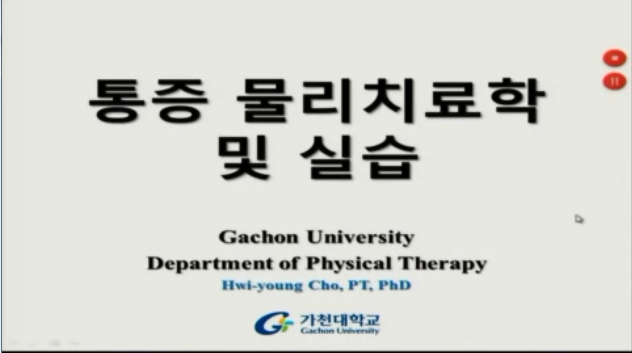근골격계 질환은 우리나라 인구의 급격한 노령화와 더불어 증가하고 있으며, 결과적으로 의료 이용 증가의 주요 원인이 되고 있다. 도수 치료는 대표적인 근골격계 질환의 비급여 치료법으...
http://chineseinput.net/에서 pinyin(병음)방식으로 중국어를 변환할 수 있습니다.
변환된 중국어를 복사하여 사용하시면 됩니다.
- 中文 을 입력하시려면 zhongwen을 입력하시고 space를누르시면됩니다.
- 北京 을 입력하시려면 beijing을 입력하시고 space를 누르시면 됩니다.
https://www.riss.kr/link?id=A109202595
- 저자
- 발행기관
- 학술지명
- 권호사항
-
발행연도
2024
-
작성언어
Korean
- 주제어
-
KDC
514
-
등재정보
KCI등재
-
자료형태
학술저널
- 발행기관 URL
-
수록면
277-290(14쪽)
- DOI식별코드
- 제공처
- 소장기관
-
0
상세조회 -
0
다운로드
부가정보
국문 초록 (Abstract)
근골격계 질환은 우리나라 인구의 급격한 노령화와 더불어 증가하고 있으며, 결과적으로 의료 이용 증가의 주요 원인이 되고 있다. 도수 치료는 대표적인 근골격계 질환의 비급여 치료법으로서, 최근 언론 보도에 따르면 2021년 기준 도수치료에 사용된 실손보험금 지급액이 1조원 이상으로 단일 비급여 치료 항목에서 가장 큰 것으로 알려졌다. 국민건강보험공단의 2021년 건강보험 보장률 보고에서도 도수 치료는 건강보험 보장률을 떨어뜨리는 가장 중요한 원인으로 지목되었다. 도수 치료는 근골격계 질환의 효과적인 치료법으로 알려져 있기는 하나, 적응증이나 적용 횟수 등의 기준이 모호하고, 전문 진료과에 대한 명확한 기준이 없이 시행되고 있으며, 일부에서는 의료 기관과 의료인의 도덕적 문제까지 거론함으로써 사회적인 문제로 부각되고 있다. 2005년 12월 이전 도수 치료가 요양급여 항목일 당시에는 해당 치료를 할 수 있는 전문과목을 정형외과, 재활의학과, 그리고 신경외과로 제한하였으나, 2005년 12월 이후 도수 치료가 비급여 치료로 전환되면서 근골격계 비전문 진료과의 도수 치료 처방이 가능하게 되었다. 그 결과 주요 치료 대상이 근골격계 질환이 아닌 진료과에서도 도수 치료가 무분별하고 광범위하게 시행되어, 국민들의 의료비 부담이 증가하고 있다. 이러한 상황들을 종합했을 때, 도수 치료의 객관적인 기준을 마련하는 것이 시급하다 할 것이다. 본 연구에서는 광범위한 문헌 고찰과 전문가를 대상으로 한 설문 조사를 바탕으로, 도수 치료의 최신 지견을 파악하여 위와 같은 사회적 문제를 해결하는 토대를 마련하고자 한다.
다국어 초록 (Multilingual Abstract)
The prevalence of musculoskeletal disorders in South Korea has surged due to the rapid aging of the population, emerging as a significant driver of increased healthcare costs. In particular, manual therapy is a representative non-insured treatment for...
The prevalence of musculoskeletal disorders in South Korea has surged due to the rapid aging of the population, emerging as a significant driver of increased healthcare costs. In particular, manual therapy is a representative non-insured treatment for musculoskeletal disorders, and according to media reports, the expenses paid by insurance companies for manual therapy exceeded 1 trillion won in 2021, making it the largest single non-insured treatment item. The National Health Insurance Service’s 2021 report on health insurance coverage identified manual therapy as a major factor contributing to declining health insurance coverage rates. Despite being recognized as an effective treatment for musculoskeletal disorders, manual therapy lacks clear criteria regarding the indications and application frequencies, and it is being performed without clear standards for specialized medical departments. Some have even raised ethical issues for medical institutions and professionals, highlighting social problems. Before December 2005, manual therapy was restricted to specialized fields, such as orthopedics, rehabilitation medicine, and neurosurgery. On the other hand, the transition of manual therapy to non-insured status in December 2005 has allowed its prescription by non-specialized medical departments for musculoskeletal disorders, leading to widespread practices even in unrelated medical specialties and contributing to over-treatment. Given these situations, establishing objective criteria for manual therapy is vital. This study aimed to establish a foundation for solving social problems by grasping the latest perspectives on manual therapy based on an extensive literature review and a survey of experts.
동일학술지(권/호) 다른 논문
-
- 대한정형외과학회
- 강찬(Chan Kang)
- 2024
- KCI등재
-
근골격계 질환의 증식치료(prolotherapy)에 대한 체계적 문헌 고찰
- 대한정형외과학회
- 고광표(Kwang-Pyo Ko)
- 2024
- KCI등재
-
3차원 메쉬 모델을 활용한 상완골 주요 부위 측정 및 형태 분석
- 대한정형외과학회
- 박소현(Sohyun Park)
- 2024
- KCI등재
-
당뇨병성 족부 골수염의 수술적 치료에서 항생제가 함유된 인산이칼슘 탈수화물/β-인산삼칼슘의 유용성
- 대한정형외과학회
- 김태호(Tae-ho Kim)
- 2024
- KCI등재





 DBpia
DBpia



